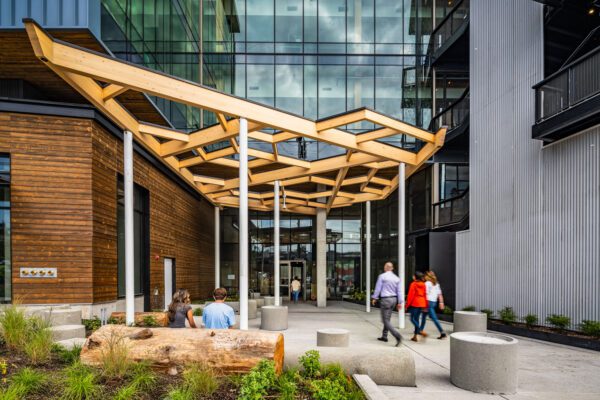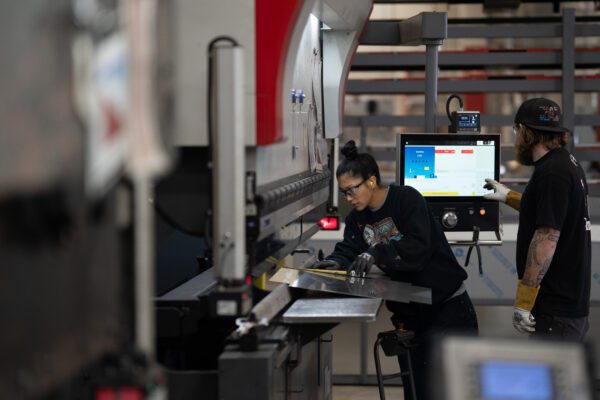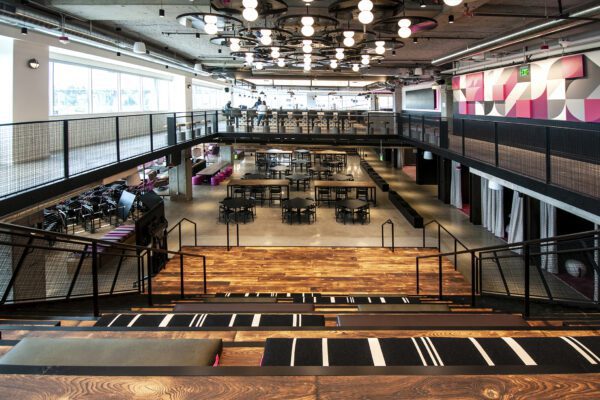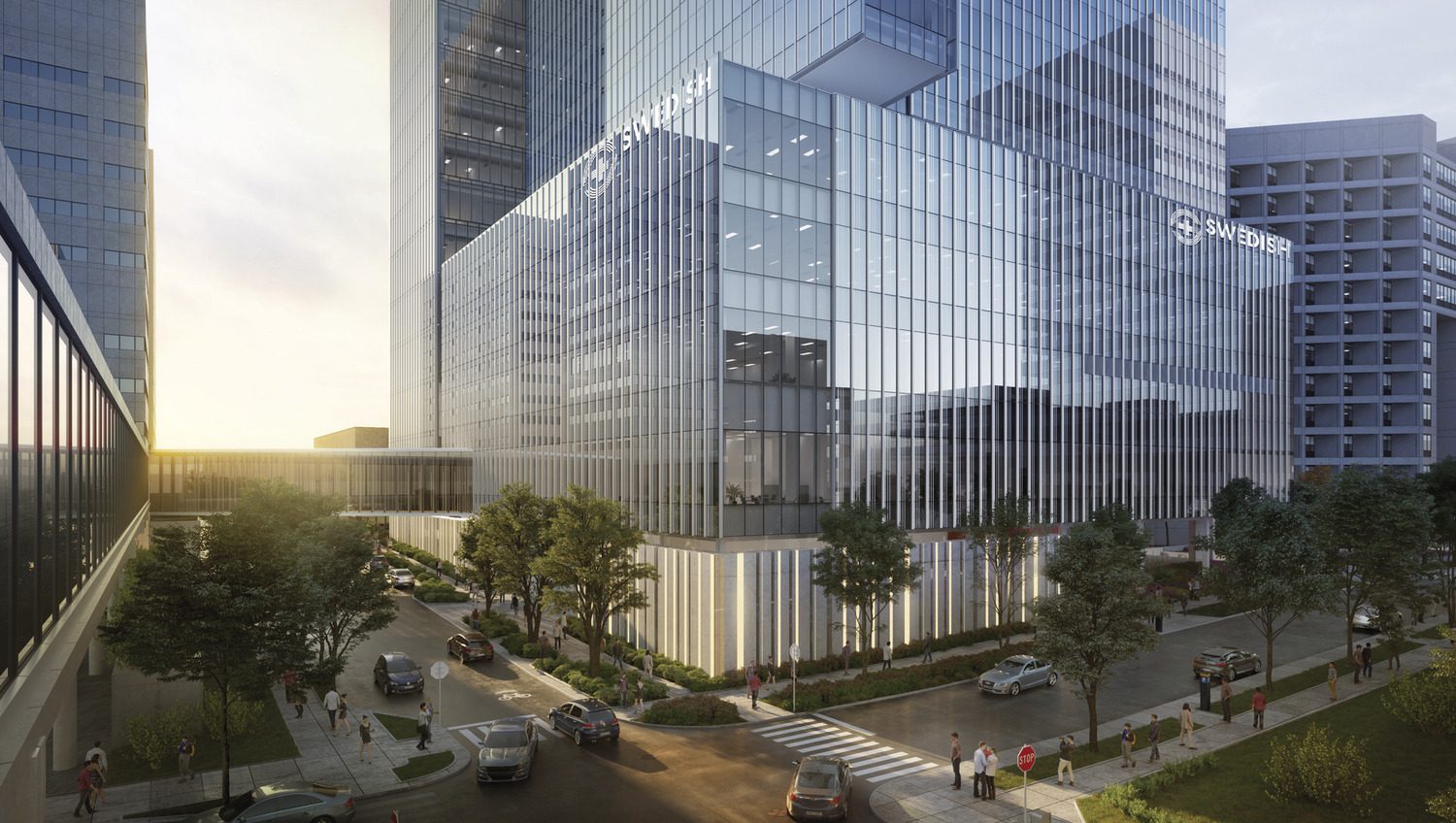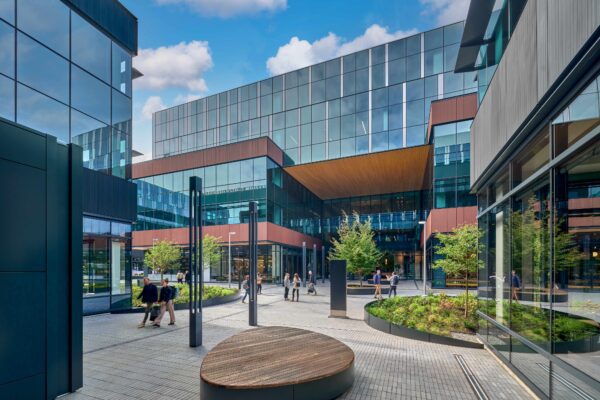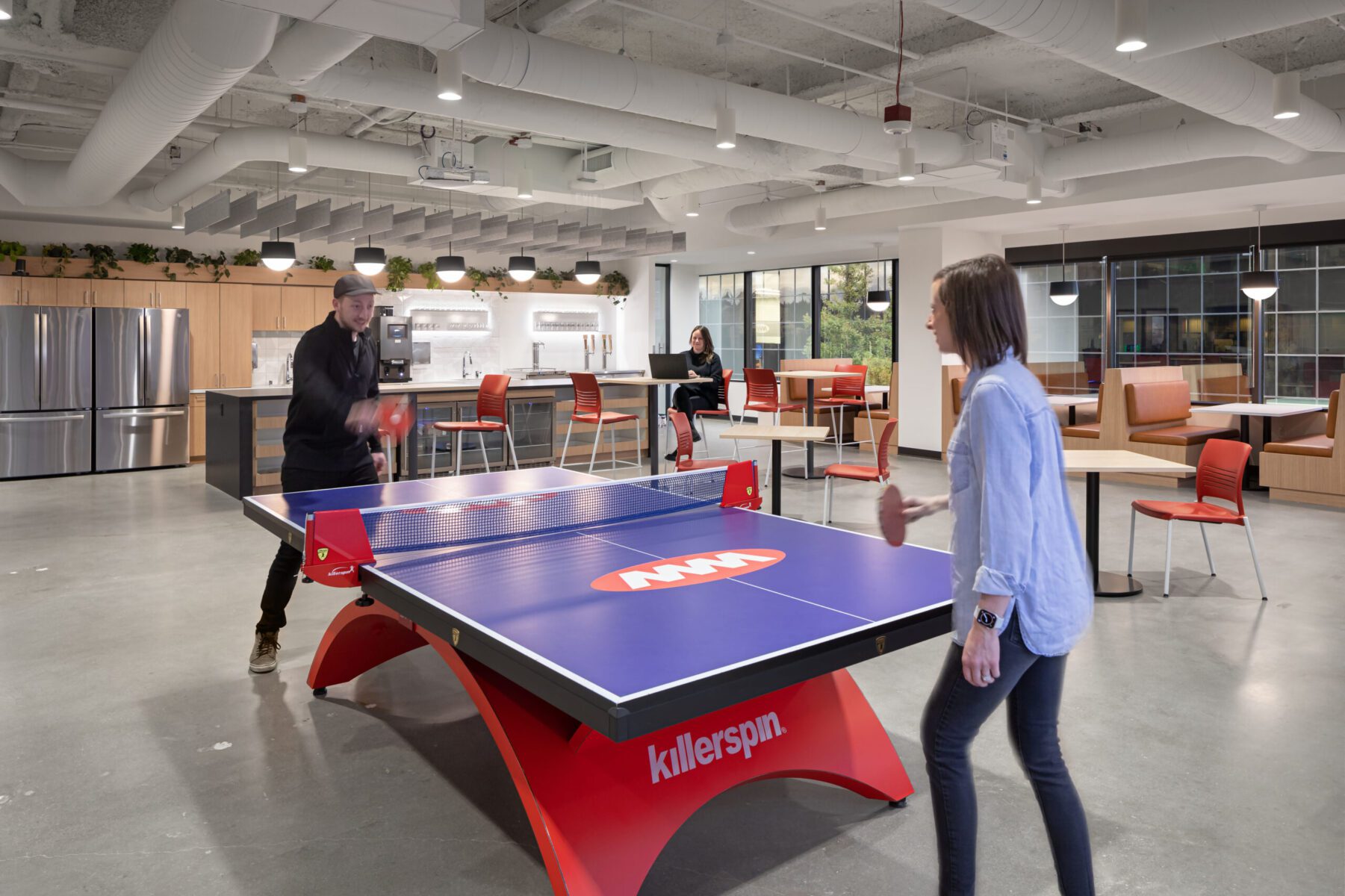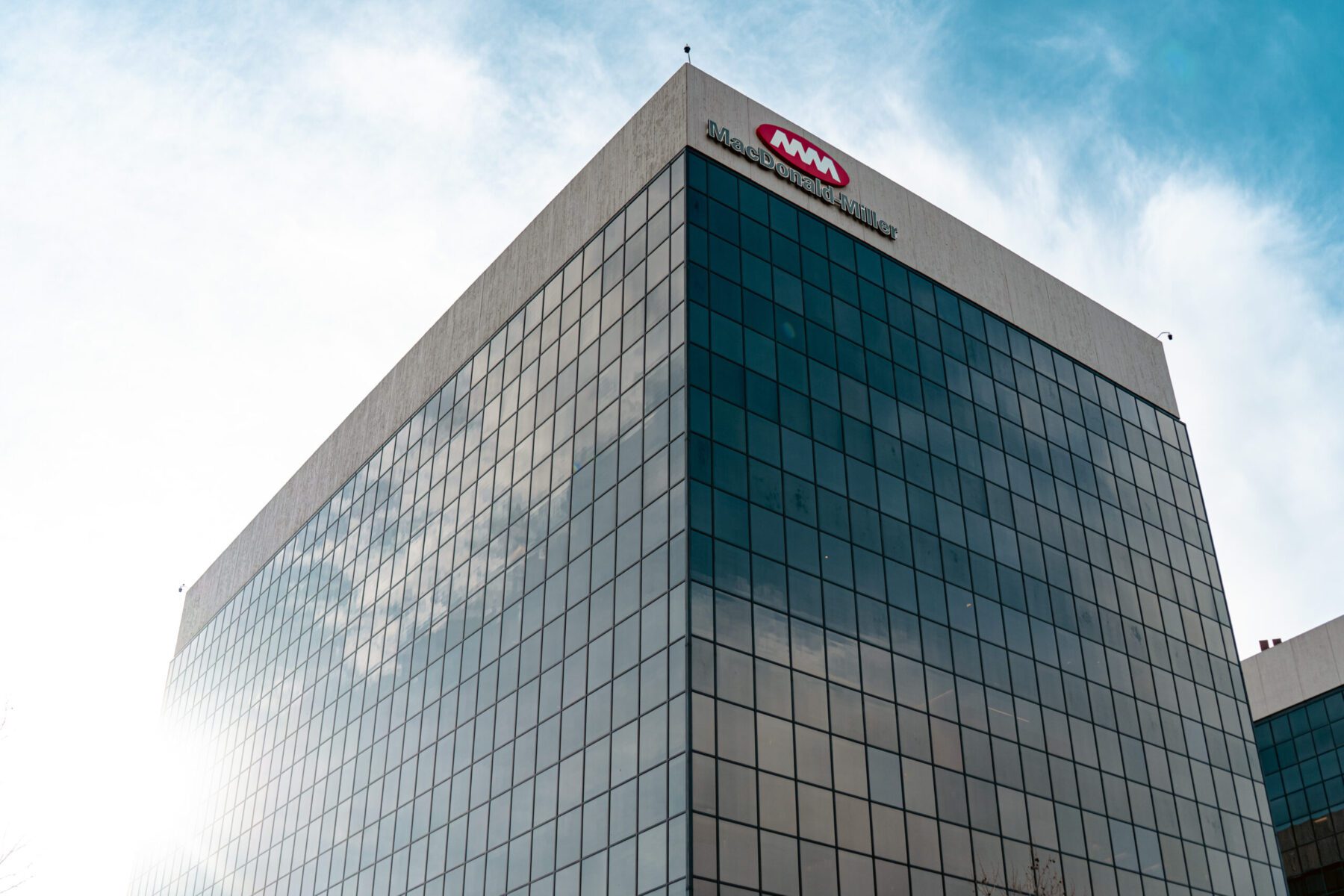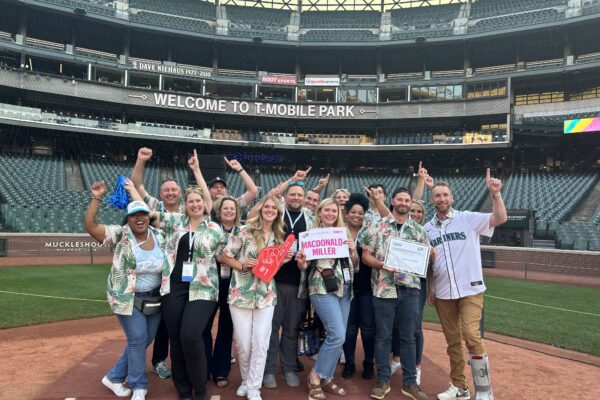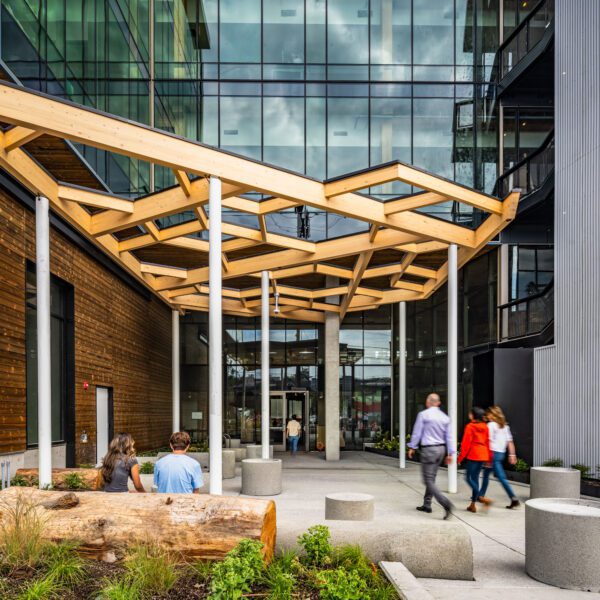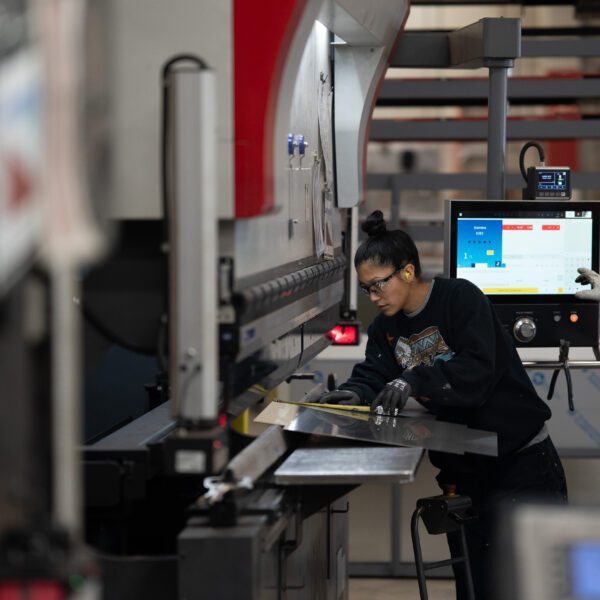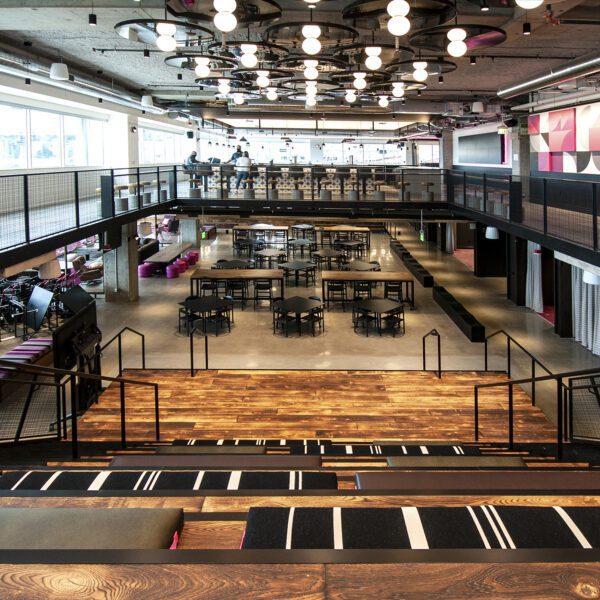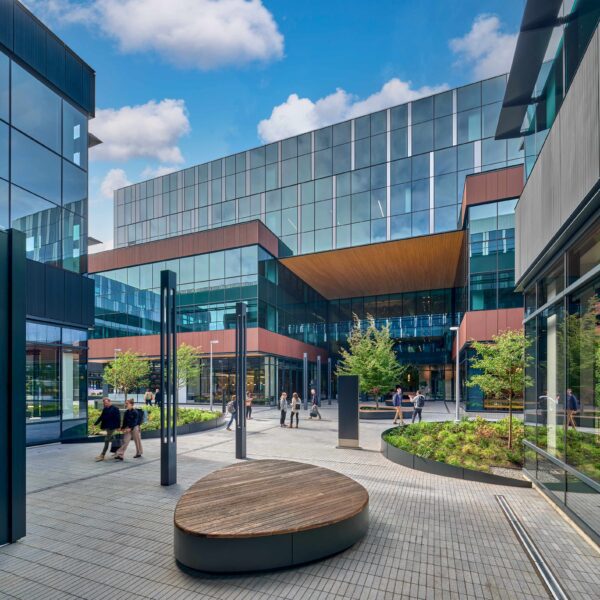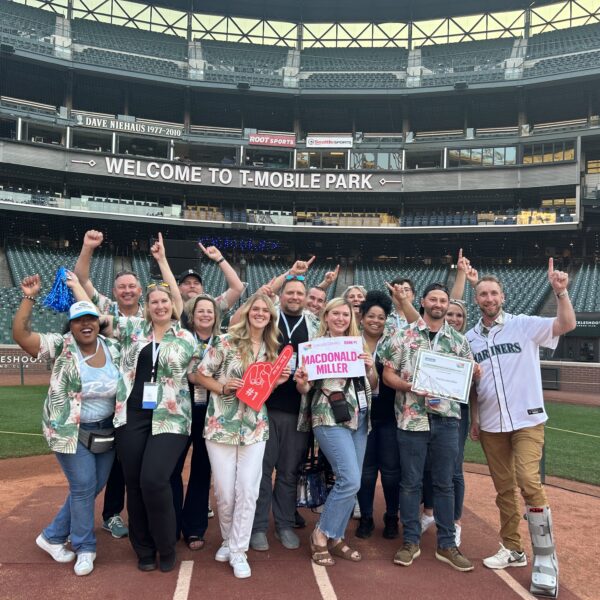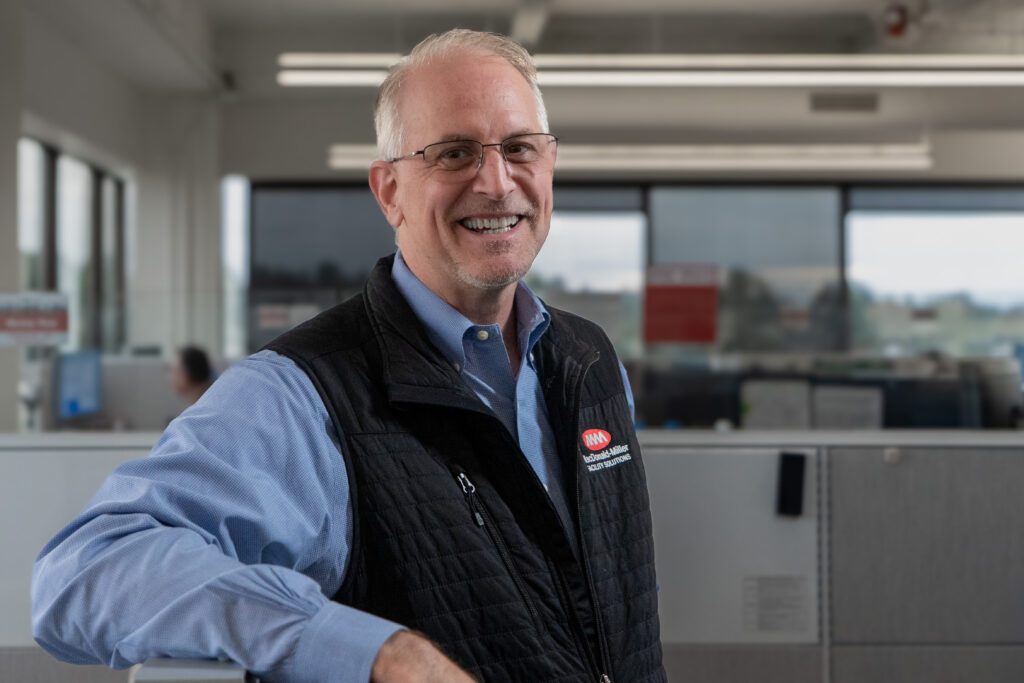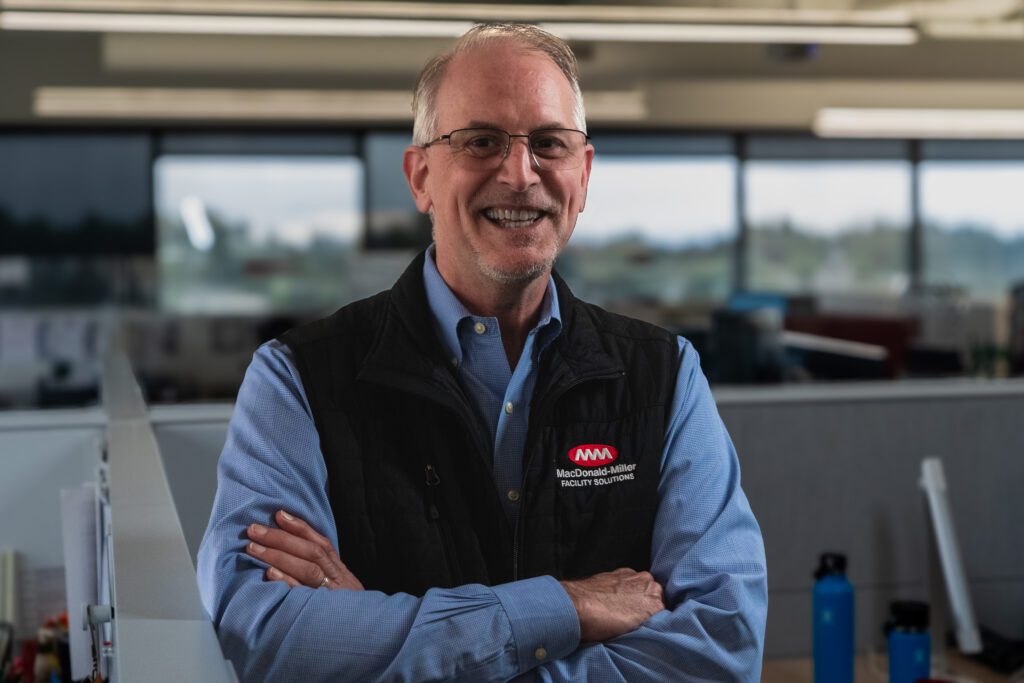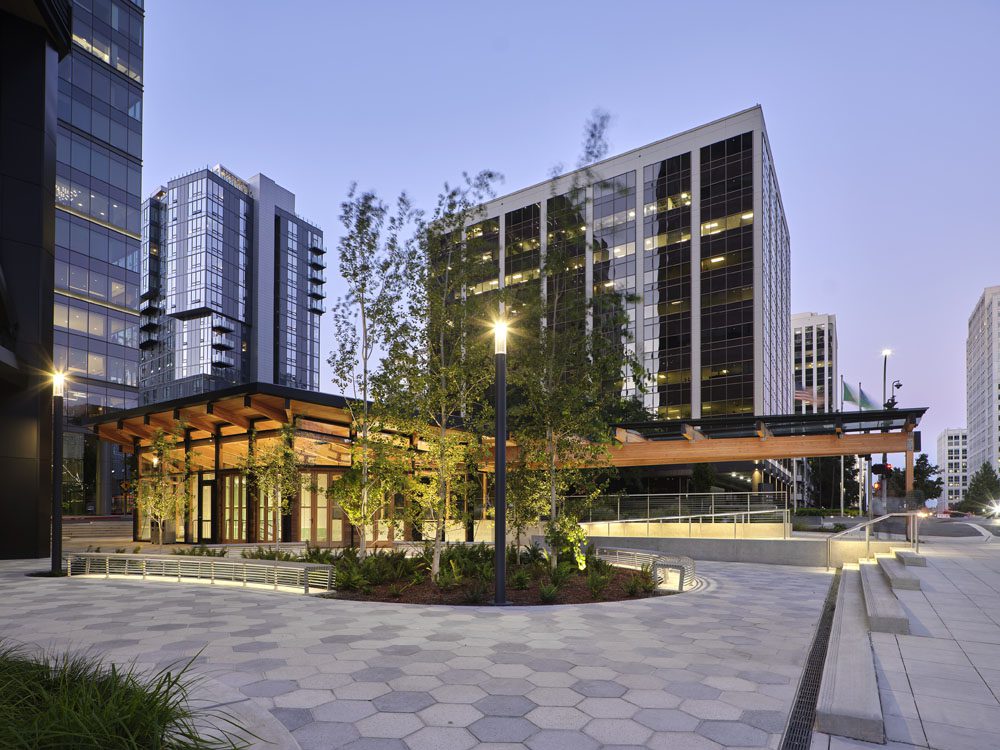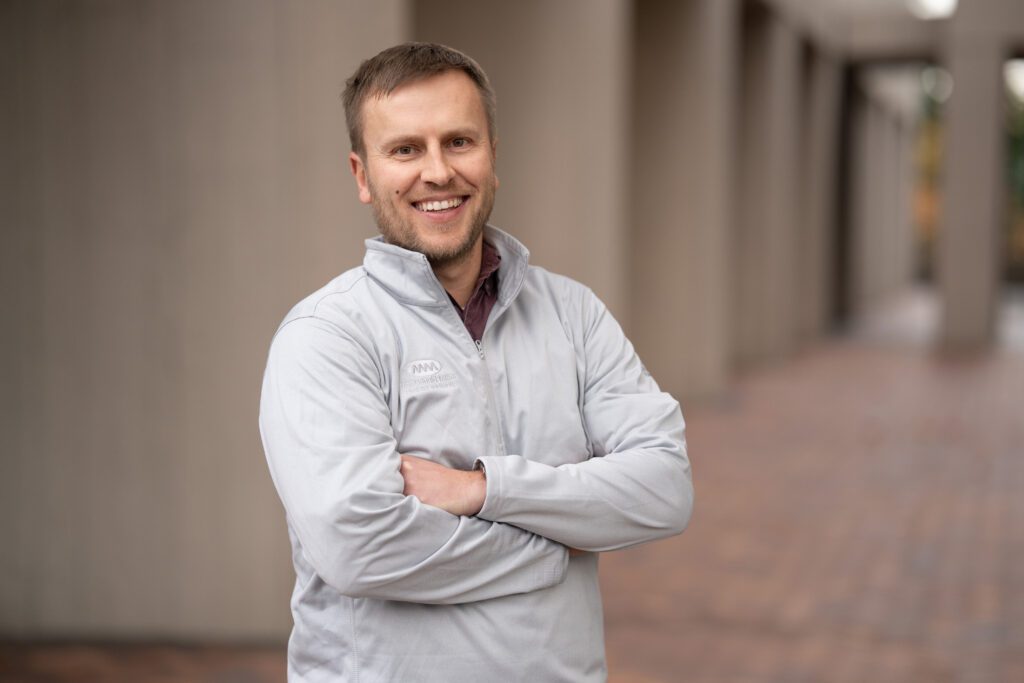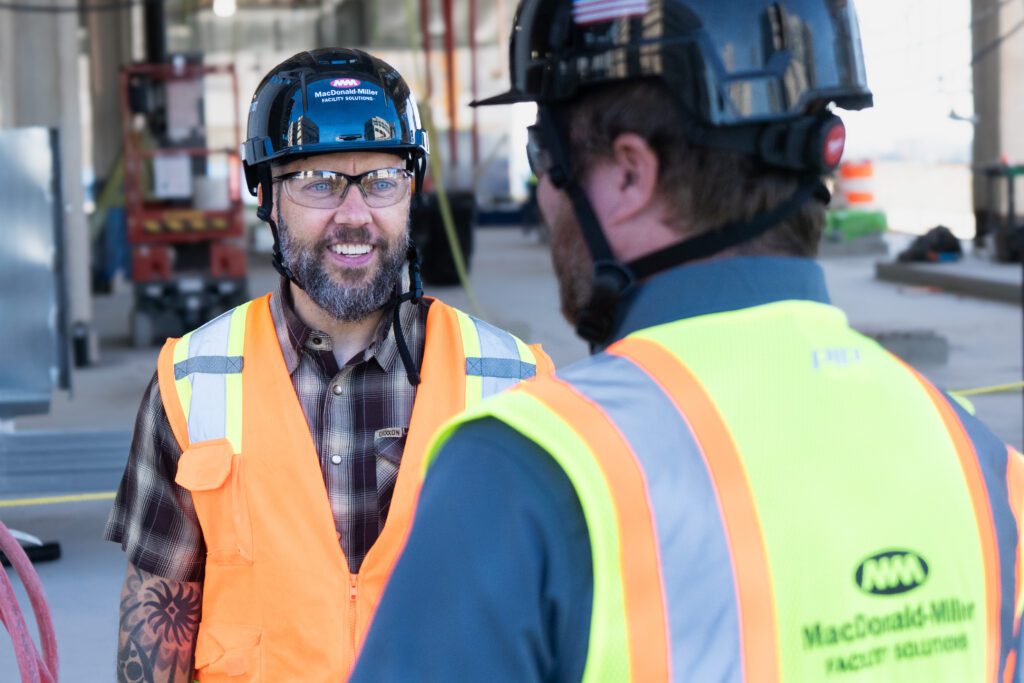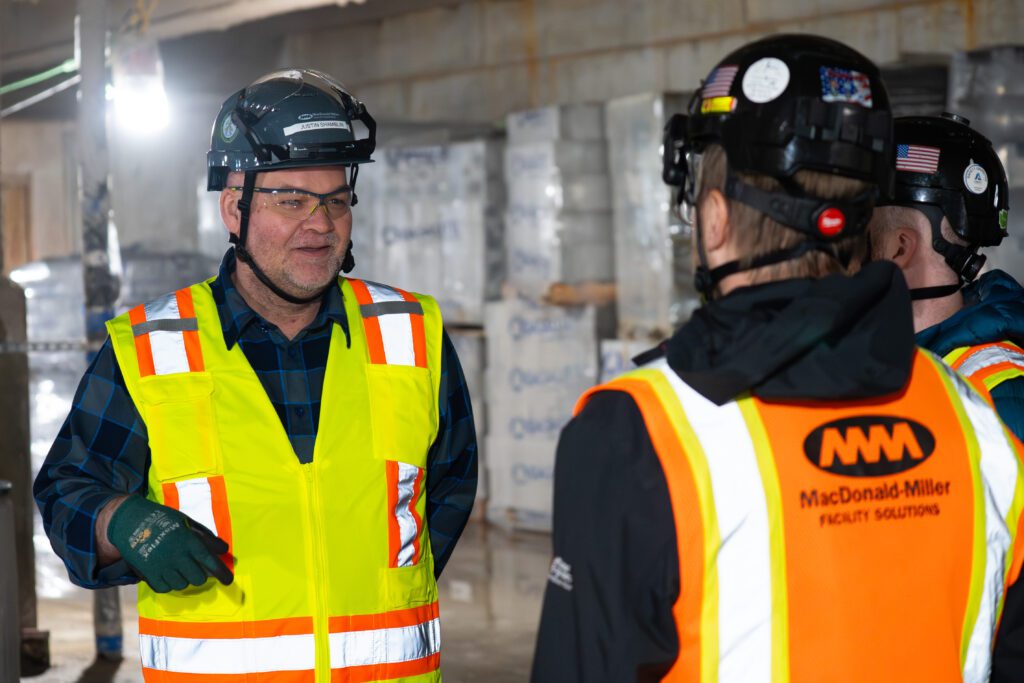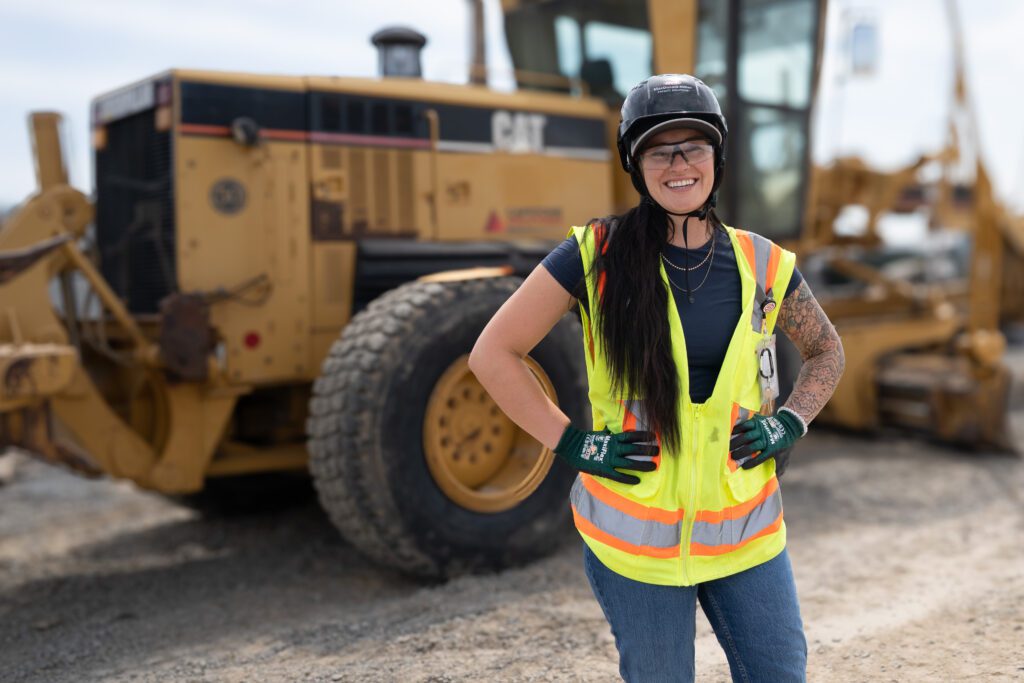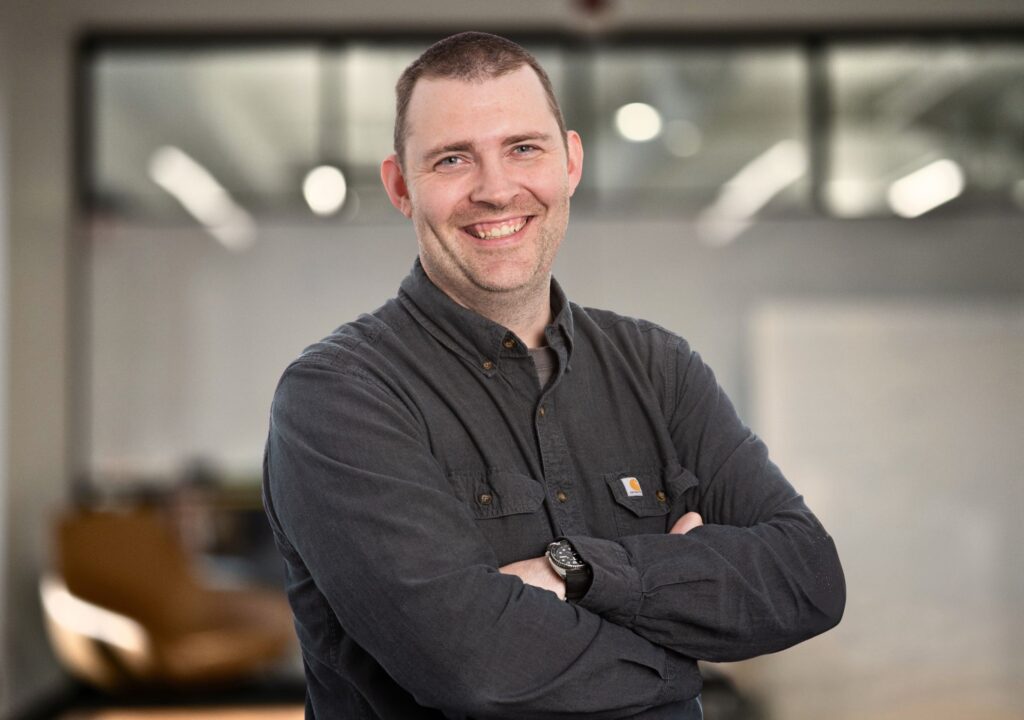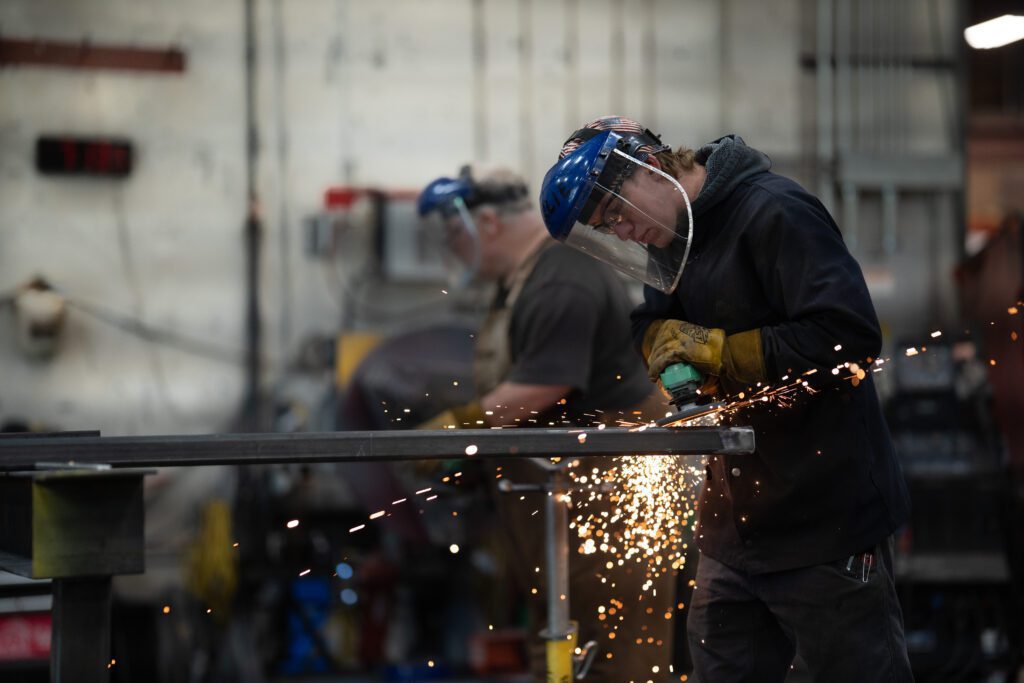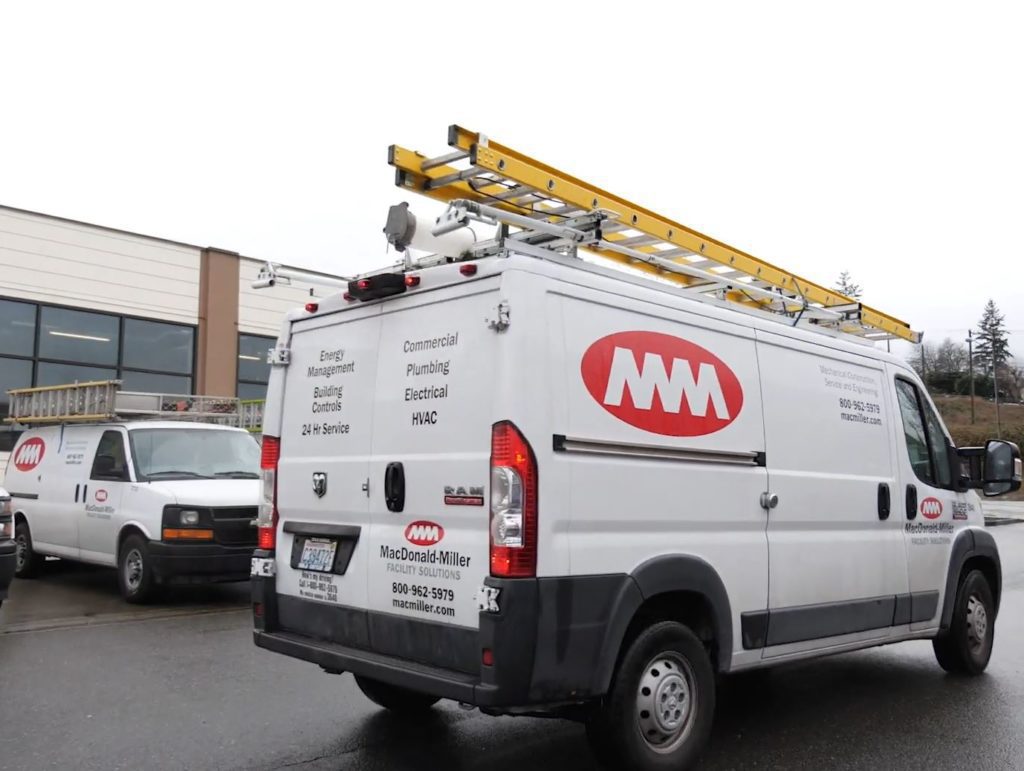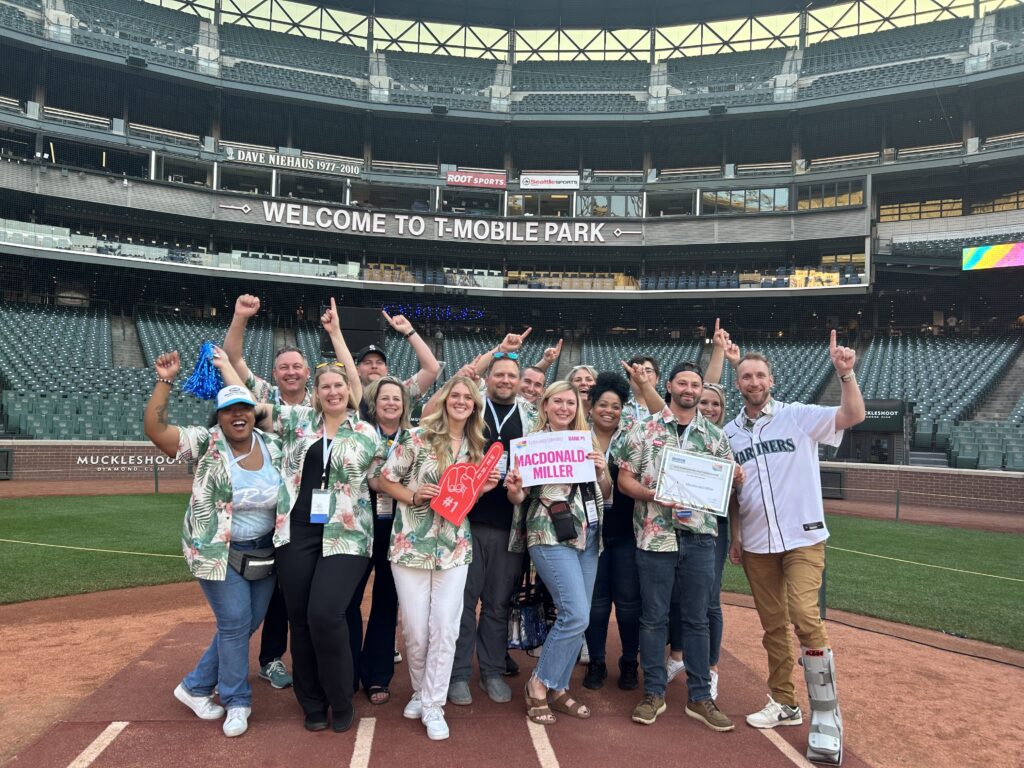Q: You’ve had a remarkable career in the industry. Would you please share more background on your path to MacDonald-Miller and the design-build approach?
Yes, my background initially included three decades as a consulting mechanical engineer, which was a role I enjoyed. The idea of moving to design-build always excited me because I genuinely enjoy construction. I spent some time working construction, framing houses, as a young man between high school and college.
That’s what brought me to MacDonald-Miller, to be more involved, working closely with the entire team throughout a project. It’s rewarding to be a part of our design-build expertise and contribute to delivering projects that truly shine in constructability.
Q: Can you highlight a particularly rewarding project from your work at MacDonald-Miller?
Certainly. I initially joined MacDonald-Miller to focus on hospital projects, notably the Providence-Swedish North Tower. This was a massive undertaking, representing over a hundred million dollars in mechanical construction, including equipment, plumbing, piping and HVAC alone. It was a truly wonderful project to be a part of.
Q: You mentioned “constructability,” which MacDonald-Miller emphasizes in its projects, especially in complex environments like healthcare. How does this expertise manifest in your engineering approach?
As far as constructability goes, I mean that’s important and that’s where we shine, right? Because as a design-build contractor, we have more experience doing construction than an average consulting engineer would. Our design engineers inherently think about constructability while they’re designing, which is crucial.
We work as a team with other people across the construction, detailing, and estimating groups to ensure designs are cost effective and constructible.
The detailers are also invaluable. They review our designs and provide critical real-world feedback, for example, advising us to move piping over a foot if it is too close to a wall for actual construction. Working with them has made us all better design engineers, preventing issues that might only surface at the construction phase with external consultants.
Q: Engineering at MacDonald-Miller plays a big role in our efforts to support customers in decarbonization. Can you share an example of that work?
Absolutely. One of the most challenging projects I’ve worked on was the Creative Energy Project for Providence-Swedish. This was a massive study and early design aimed at helping Swedish decarbonize the hospital, which is very difficult to do because in healthcare, they generally use a lot of steam for critical functions like heating, domestic water, humidification, and sterilizers.
The goal was to transition away from natural gas-fired systems to carbon-free equipment, which required the use of heat pump systems and heat recovery chillers. The challenges included finding locations for the equipment and finding enough electrical capacity to make the switch.
Q: With such an impactful career to date, how do you view your contribution to buildings and construction in our region overall? What makes working on these projects fulfilling?
On a personal level, it’s genuinely exciting to observe the variety of projects and overall growth. It’s fulfilling and fun to recognize structures I’ve contributed to, like the Seattle Convention Center, Seattle Children’s Hospital, Providence-Swedish Hospital, Swedish Issaquah Hospital, the MultiCare Good Samaritan Hospital in Puyallup, and the Seattle Municipal Building.
It’s rewarding to see those iconic buildings and say, ‘Oh yeah, I contributed to that a little bit.’ The convention center project, in particular, was super cool, especially considering its unique challenges over the freeway and the needs of the building. It was a unique concept at the time, and it worked beautifully.
